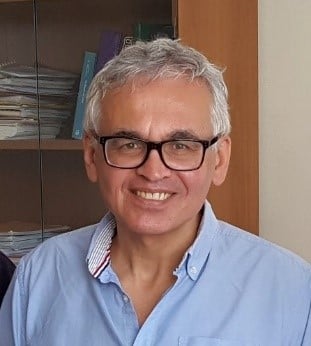Need Help?
22 August 2022
Prof. Dr. Sergei Fedotov Appointed Section Editor-in-Chief of Section “Life Science, Biophysics” in Fractal and Fractional
We are pleased to announce that Prof. Dr. Sergei Fedotov has been appointed Section Editor-in-Chief of the Section “Life Science, Biophysics” in Fractal and Fractional (ISSN: 2504-3110).
 |
Name: Prof. Dr. Sergei Fedotov |
Prof. Dr. Sergei Fedotov obtained his Ph.D. (1986) from Ural Federal University. Fedotov held research positions in London (1990), Aachen (1993–1995), Wuppertal (1997), and Berlin (1998) before joining the Department of Mathematics, UMIST, in Manchester as a Lecturer in 1998. Since 2005, he is a professor of applied mathematics at the Department of Mathematics, University of Manchester, UK. He held visiting professor positions at Stanford University (USA), Universitat Autonoma de Barcelona (Spain), University Lyon 1 (France), and the University of New South Wales, Sydney (Australia).
Prof. Dr. Fedotov’s research focuses on random walk theory and reaction-transport systems. He has successfully applied anomalous random walk ideas to a broad range of analytical studies related to non-Markovian transport phenomena in physics, chemistry, and biology.
The following is a short Q&A with Prof. Dr. Sergei Fedotov, who shared his vision for the journal with us, as well as his views of the research area and open access publishing:
1. What appealed to you about the journal that made you want to take on the role as the Editor-in-Chief of the “Life Science, Biophysics” section?
I believe that the “Life Science, Biophysics” Section has great potential to promote cross-disciplinary studies involving fractals and fractional calculus and their applications in biology. I think that this new Section may have a direct impact on a range of disciplines in biophysics and life sciences by bringing new ideas from fractional analyses. At the same time, applied mathematicians, computer scientists, and physicists dealing with fractional problems will benefit from insights provided by biological data seen in the context of fractional calculus. The most important factor was that Fractal and Fractional has a history of publishing excellent mathematical papers, in which I have experience, in addition to touching upon applications of such work. In my experience, the "Life Science, Biophysics" Section is needed to further promote such papers in high-impact fields like biology and biophysics, so that these works can lead to real impacts in broader science and engineering.
2. What is your vision for the journal?
My vision for the journal is that this new Section will become a forum for cutting-edge and interdisciplinary research that bridges the fractal and fractional analysis community with biophysicists and biologists. Of course, the new Section will continue to focus on key research problems in fractional analysis while attracting new people from biology by expanding the scope of applications in life sciences. Given the history of the journal's publications, it is apt that the journal begins to look at new applications, particularly in the life sciences, so that papers focusing on fractal and fractional calculus can be applied to high-impact fields like biophysics and biology.
3. What does the future of this field of research look like?
I expect a plethora of truly interdisciplinary works of all kinds at the interface of quantitative biology, physics, and mathematics involving fractals and fractional analysis. Due to the vast amount of published works in the fractal and fractional calculus field, it is time for applications of such results to be made in the life sciences. There is an overall positive atmosphere surrounding biological and biophysical applications for fractal and fractional calculus in our community and I am sure that there are many undiscovered applications to be found.
4. What do you think of the development of open access in the publishing field?
I think that the open access model stimulates the editorial body to make an effort in achieving competitive publishing times and ensuring wide promotion and the effective dissemination of published papers to a broader audience. Furthermore, it promotes equality and diversity in the publishing field and improves the robustness and fidelity of published results. Overall, I believe open access to be currently beneficial to all academics and for it to become increasingly beneficial as the number of peer-reviewed publications increases exponentially in the future.
The editorial team warmly welcomes Prof. Dr. Sergei Fedotov as the Section Editor-in-Chief of the “Life Science, Biophysics” Section and looks forward to his contribution to the continued success of Fractal and Fractional.

